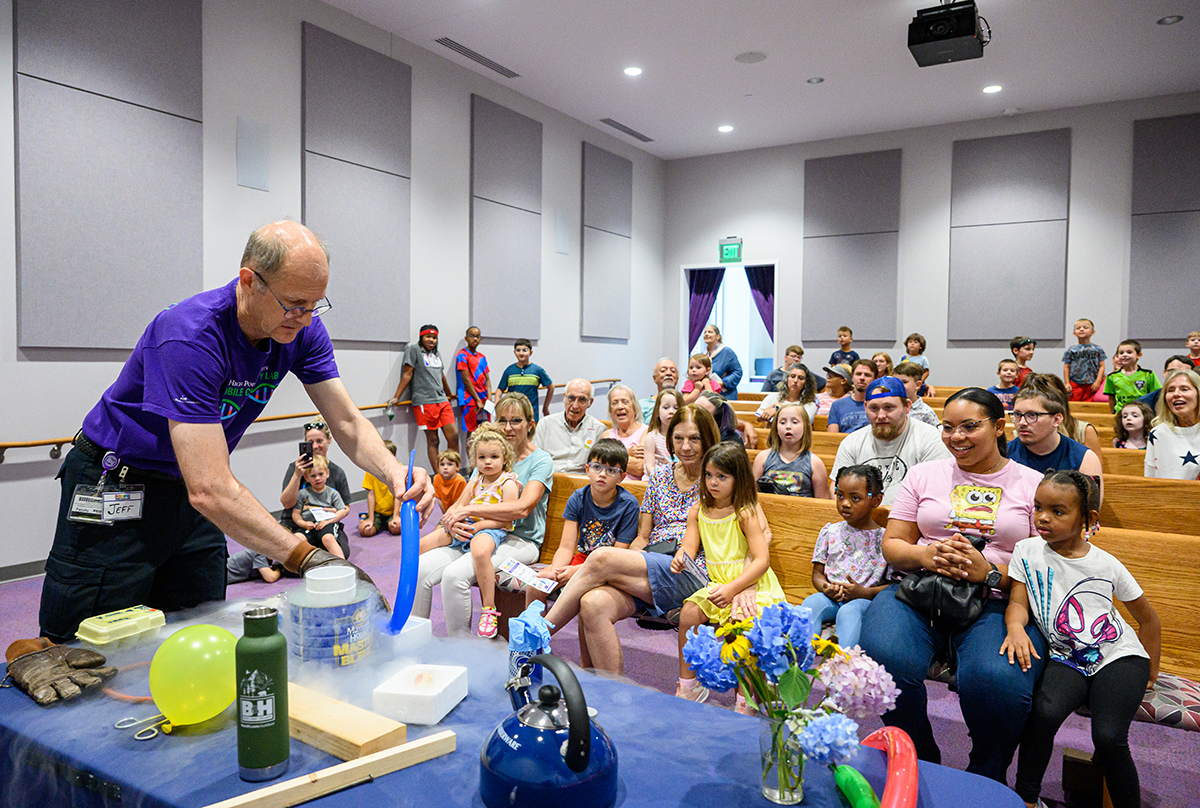Jeff Regester, HPU instructor of physics and astronomy, educated families as he demonstrated converting nitrogen gas to liquid nitrogen.
HIGH POINT, N.C., July 12, 2024 – High Point University students and faculty recently explored science with local children and families at the Nido and Mariana Qubein Children’s Museum during the first SciQuest Spectacular.
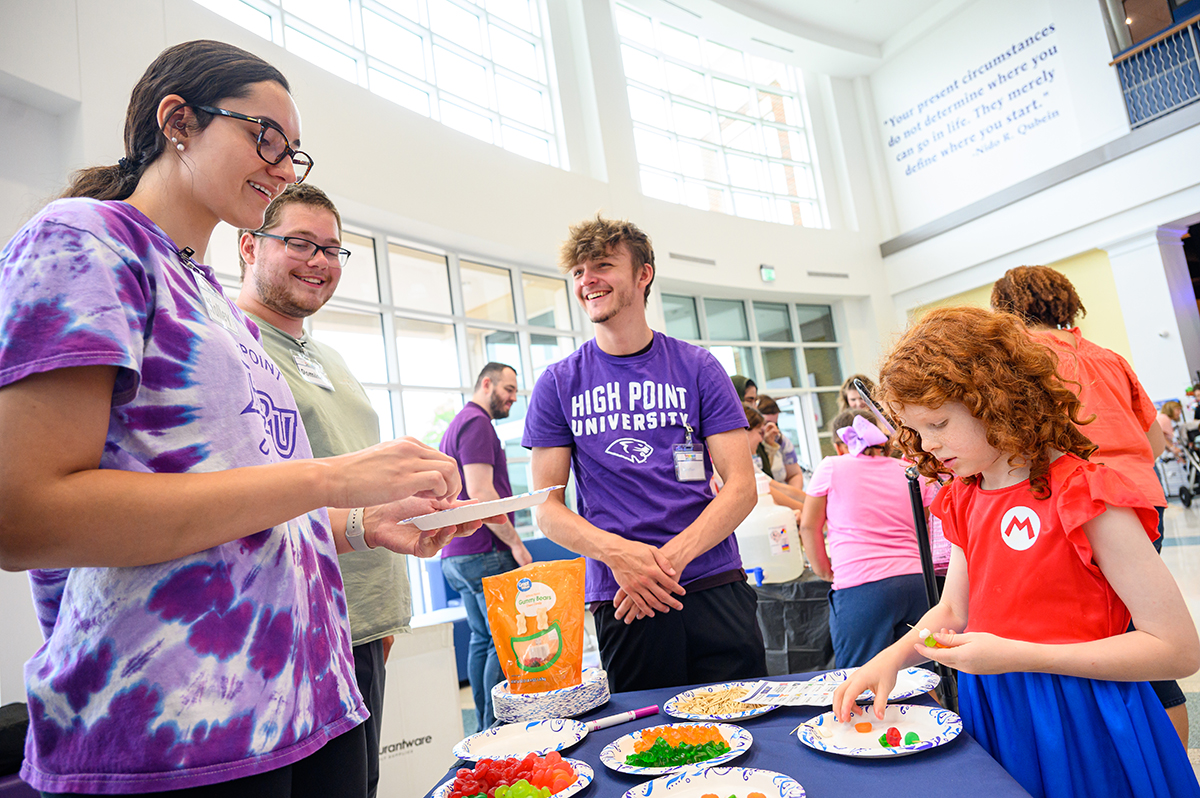
About 35 HPU student volunteers and 15 faculty mentors created interactive science activities and demonstrations to present to children in the community on June 27, said Dr. Kelsey Kean, assistant professor of chemistry and co-director for the Summer Research Program in the Sciences (SuRPS). Among the activities, children were able to taste edible DNA, pet insects and see stars inside a mobile planetarium, which is a new collaboration of Natural Sciences Fellows, the physics department and Culp Planetarium.
“This is building our relationship between Wanek School of Natural Sciences, our students who love to do outreach and the Children’s Museum,” said Kean. “We hope this is the first of many events with our students, the mobile lab and the museum coming together to bring High Point cool science.”
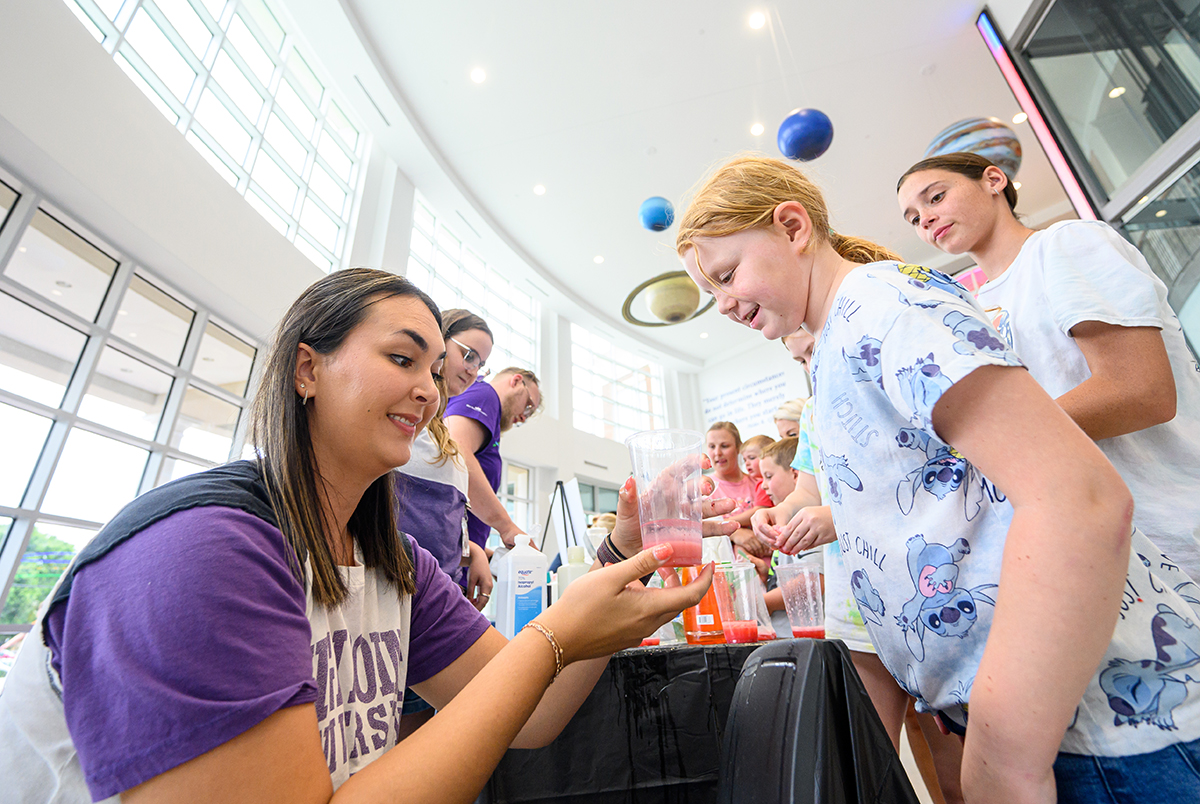
Children are naturally curious about how the world around them works. Rather than listen to someone talk about science, this event allowed children to experience it for themselves in a festival atmosphere similar to the HPUniverse Day community event that HPU formerly hosted on campus.
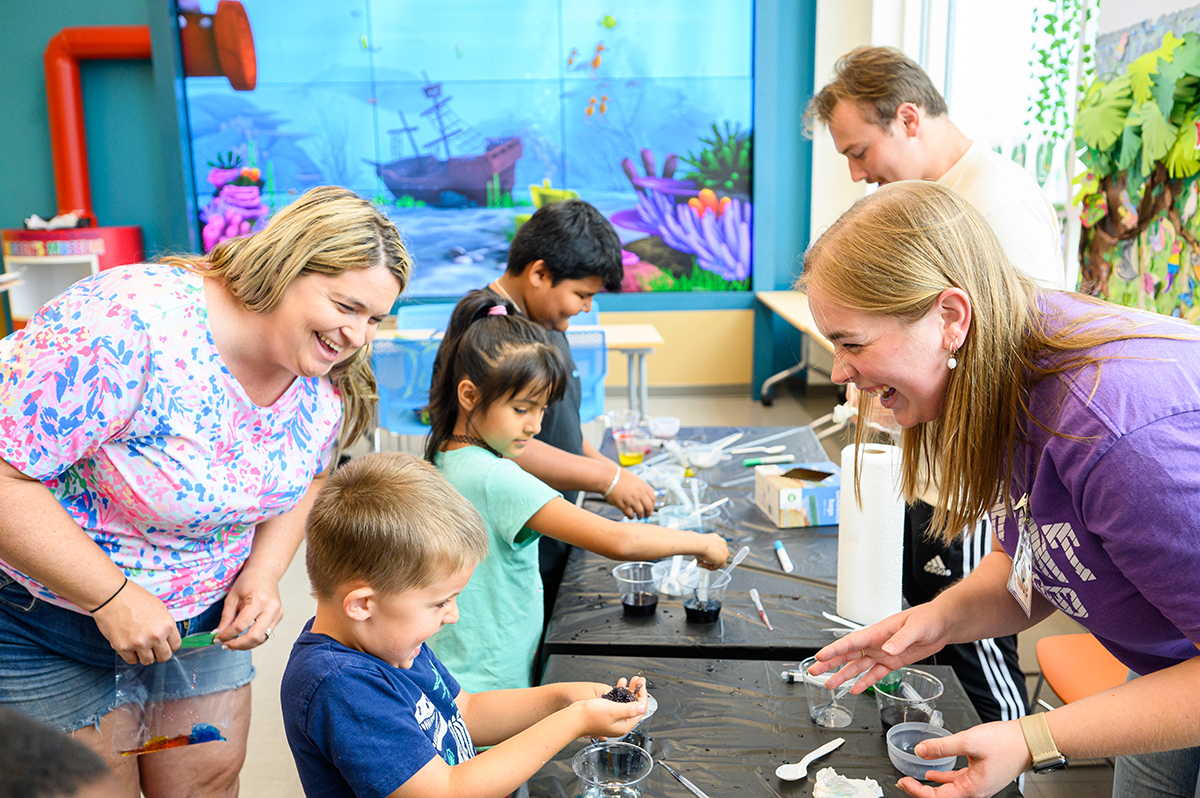
The outreach event also allows HPU undergraduate students to develop their communication skills and self-confidence to explain complex scientific concepts in simple terms.
Demonstrating and explaining how a thermal infrared camera captured children’s movements was a first-time experience for Jack Moreland, a sophomore physics and biochemistry major from Dallas, Texas.
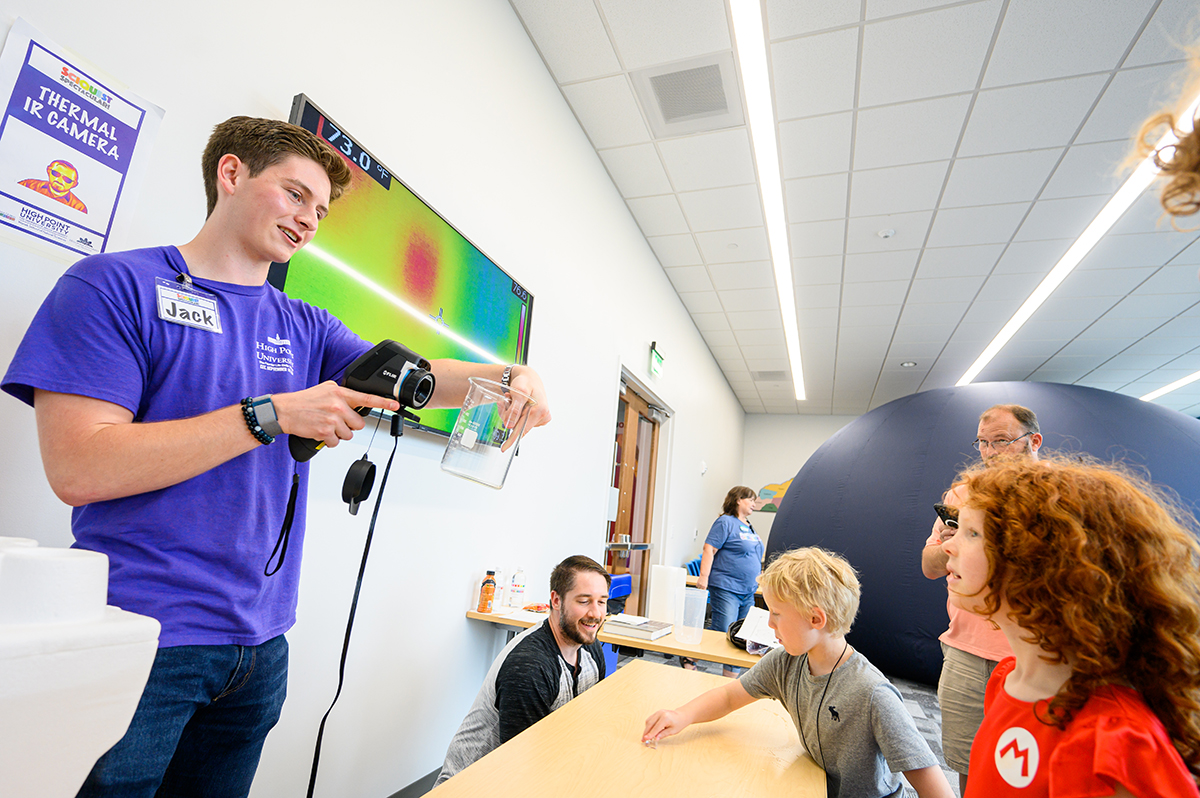
“I learned how to communicate very interesting topics like this in an easy way,” Moreland said. “It’s important to know how to translate a complicated topic to a 6-year-old level for them to understand. It’s also so enjoyable just to watch them have fun and let them play with the ice to see what it looks like on camera.”
At a table featuring edible DNA models, children lined up inside to take a bite. At an outside exhibit, they were excited to witness a chemical reaction with elephant toothpaste that resulted in gummy bear explosions.
“We’re hoping to get them more interested in science and that this experience is something they can carry with them,” said Carlee Logan, a sophomore neurology and biology major from Hickory, North Carolina. “Once they get into high school and college, hopefully we’ve sparked some interest in the sciences.”

SciQuest offered an opportunity for families to come together to experience hands-on science activities, ranging from biology to physics in a low-risk and fun-filled setting, said Lisa Garrison, the museum’s education and program director.
“They’re just enjoying themselves, laughing, having fun and seeing that science can be fun,” said Garrison. “We’ve been looking forward to getting a partnership between the museum and the university to let kids see what real-life scientists look like. I think it’s super important that kids can identify with scientists and know that they can look like them – it’s not always a guy in a lab coat.”
